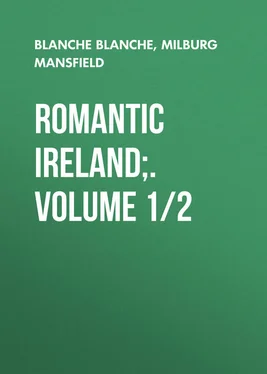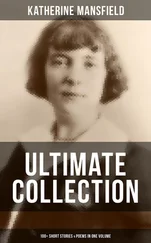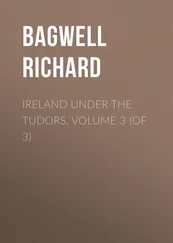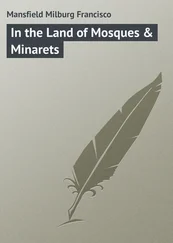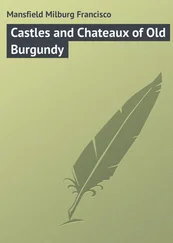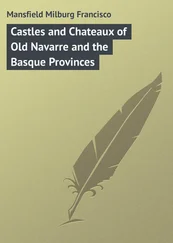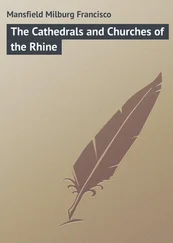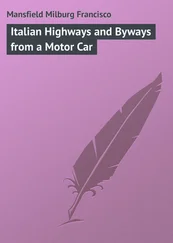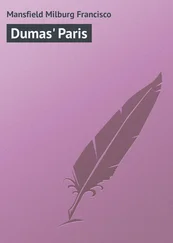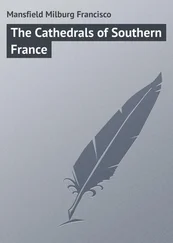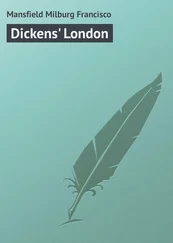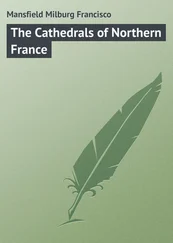Milburg Mansfield - Romantic Ireland;. Volume 1/2
Здесь есть возможность читать онлайн «Milburg Mansfield - Romantic Ireland;. Volume 1/2» — ознакомительный отрывок электронной книги совершенно бесплатно, а после прочтения отрывка купить полную версию. В некоторых случаях можно слушать аудио, скачать через торрент в формате fb2 и присутствует краткое содержание. Жанр: foreign_language, foreign_prose, Путешествия и география, на английском языке. Описание произведения, (предисловие) а так же отзывы посетителей доступны на портале библиотеки ЛибКат.
- Название:Romantic Ireland;. Volume 1/2
- Автор:
- Жанр:
- Год:неизвестен
- ISBN:нет данных
- Рейтинг книги:3 / 5. Голосов: 1
-
Избранное:Добавить в избранное
- Отзывы:
-
Ваша оценка:
- 60
- 1
- 2
- 3
- 4
- 5
Romantic Ireland;. Volume 1/2: краткое содержание, описание и аннотация
Предлагаем к чтению аннотацию, описание, краткое содержание или предисловие (зависит от того, что написал сам автор книги «Romantic Ireland;. Volume 1/2»). Если вы не нашли необходимую информацию о книге — напишите в комментариях, мы постараемся отыскать её.
Romantic Ireland;. Volume 1/2 — читать онлайн ознакомительный отрывок
Ниже представлен текст книги, разбитый по страницам. Система сохранения места последней прочитанной страницы, позволяет с удобством читать онлайн бесплатно книгу «Romantic Ireland;. Volume 1/2», без необходимости каждый раз заново искать на чём Вы остановились. Поставьте закладку, и сможете в любой момент перейти на страницу, на которой закончили чтение.
Интервал:
Закладка:
M.F and B. McM. Mansfield
Romantic Ireland
CHAPTER I.
INTRODUCTORY
IN times past books of travel were frequently written for the perusal of “a few intimate friends.” Such was the purpose of a little pamphlet entitled “A Trip to Ireland,” which a few years ago fell into the hands of the writer. Its author and place of publication are unknown, but it bore the date of 1836.
The writer of this book has not the excuse of this unknown author and admirer of Ireland’s sylvan, historical, and romantic beauties for compiling the present work, nor is he possessed of the belief that he is called upon to attempt the task of merely imparting knowledge to the untravelled. But, since his attention was thus first directed to Ireland, – with the result that he has made a more or less intimate acquaintance with the allurements and charms of this delectable, if impoverished, land, – he has come to believe that there are a large number of interested people who would be glad to have an attractive presentation of some of the sights, scenes, and incidents which come to those who are fortunate enough to be able to sojourn there for a time.
In other words, this book is a record of, and some impressions of, a few of those ever-present charms of the green isle which have so permeated its history, its romance, and its literature.
As a record of a pilgrimage, this book will doubtless appear less satisfactory than as a presentation of facts relative to both the storied past and present-day affairs of the country, though it deals not so much with political issues and economic aspects as it does with the more pleasing and more tangible features of historic sites and scenes.
It is not expected that this book will escape criticism; probably it will not. It is impossible to attempt to compress a history of Ireland, a monograph on its ancient civilization, a treatise on manners and customs, or even an account of its architectural remains, at all consistent with the deserts of the subject, within the confines of a work such as this.
All that is claimed is that it is a résumé of the facts and the romance which, garnered from various sources, have impressed themselves upon the minds of the collaborators of this book in their journeyings through Erin’s Isle.
It is hoped, however, that these chapters, or, perhaps, more assuredly, the pictures with which they are adorned, will awaken a curiosity on the part of some to know more of Britain’s sister-isle.
Unfortunately, to many travellers – and to most American travellers – Ireland is a mere name, with a handle at either end, Queenstown in the south, and Londonderry or Moville in the north, where ships stop, in the dead of night, to land or embark the mails.
Usually, travellers from the Western world are in too much of a hurry to partake of the delights of London or the “dainty prettiness” of the Thames valley, the sanctity of the cathedral precincts of Canterbury or Salisbury, or even the more alluring attractions which lie “across Channel,” to think for a moment of disembarking at Cork harbour, with the mails, on board a rather uncomfortable “tender,” and, usually, amid much discomfort of weather.
Once the opportunity is missed, they are unlikely to retrace their steps in that direction, since one’s enthusiasm or desire pales before charms and attractions then present.
It ought to be a part of every traveller’s experience for him to pay a visit to Ireland – the “Emerald Isle,” or “Romantic Ireland” – and judge of its attractions, the places and the people, as seen on their native soil.
With a warm heart she will welcome him; with lip-liveliness and sparkling language she will entertain him; with impulsive zeal she will conduct him over her diversified domain, and bring under his eye scenes where —
“Grace and Terror smiling stand
Like sisters hand in hand.”
Though less fastidious than England, and without the canny cautiousness of Scotland, yet, of the Three Graces of the United Kingdom, fair Erin, for natural gifts and spontaneous beauties, stands preëminent.
“To the Bretons, the Basques, and the Irish,” says an observant French writer, “races not dissimilar in their hidden habits of thought and in the vague sadness of their eyes, the Atlantic Ocean is a boundary for the mind… It is their climate background, resting-place, and grave … the green hills into which Europe breaks to meet the southwest wind.”
All this, and more, is the Atlantic to the whole of northwest Europe, – Ireland in particular, – and its influences are not only great, but far-reaching.
The Irish, they say, have never been great seafarers. This, it is feared, is true to no small extent. They are not even great fishermen, as they well might be in their sea-girt isle. The Irishman himself will tell you that it is because the thrifty and hardworking west-coast Scotch have usurped their market. This may be so to a certain degree; but, to a still greater degree, their lack of capital to properly equip the industry is the reason why the harvest of the sea is garnered under their very sight.
It is not given to all who would travel and muse en route to be able to express their thoughts with that beauty of language which graces the lines of Stevenson or of Sterne. One may not even have the temerity to attempt to imitate their style.
He may, however, – and with propriety, thinks the writer, – consider, if he will, that theirs was the view-point of the acute observer and lover of the beautiful, and, as near as may be, imbibe somewhat of the emotions and sentiments with which these masters beheld the spots covered by their wanderings. Their words have come down to us as a variety of topographical description which can only be recognized as a new and precious thing, compared to the descriptions before and since.
With such an end in view were the various wanderings which are set forth in these pages undertaken. Not consecutively, nor even methodically, was the route laid out, but in the end it covered practically the entire island at varying seasons and under equally varying conditions of comfort or discomfort, though no hardships or disagreeable experiences were encountered, and it is confidently asserted that nothing of the kind would be met with by any who might make the journeys under similar conditions.
“June the nineteenth, arrived at Holyhead after an instructive journey through a part of England. Found the packet, the Claremont , Captain Taylor, would sail very soon.
“After a tedious passage of two and twenty hours, landed on the twentieth, in the morning, at Dunleary (now Kingstown), four miles from Dublin, a city which much exceeded my expectation.”
Thus wrote Arthur Young in his simple and quaint phraseology in 1776.
Arthur Young was a great traveller, one might say an inveterate traveller. He observed and wrote mostly of matters agricultural, but his side-lights thrown upon the screen – if not exactly illuminating it to a marked degree – were of far more interest and value to the general reader or travel-lover than the dicta of pedants or the conjectures of antiquarians.
Arthur Young was an agriculturist, an economist, or whatever you like to think him; but he evidently could not repress the temptation to put the results of his observations into print, as the many scores of entries to his credit in the history of book-making and authorship will show.
He sought to chronicle his “Tour in Ireland” for posterity, and conceived the thought of publishing the work “by subscription.” This he did in the year 1780 – and a most unlovely specimen of book-making it was. It was foredoomed to failure, and it apparently met it forthwith; for the author states in his preface that he was only able to complete the work at great expense to himself.
Читать дальшеИнтервал:
Закладка:
Похожие книги на «Romantic Ireland;. Volume 1/2»
Представляем Вашему вниманию похожие книги на «Romantic Ireland;. Volume 1/2» списком для выбора. Мы отобрали схожую по названию и смыслу литературу в надежде предоставить читателям больше вариантов отыскать новые, интересные, ещё непрочитанные произведения.
Обсуждение, отзывы о книге «Romantic Ireland;. Volume 1/2» и просто собственные мнения читателей. Оставьте ваши комментарии, напишите, что Вы думаете о произведении, его смысле или главных героях. Укажите что конкретно понравилось, а что нет, и почему Вы так считаете.
